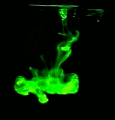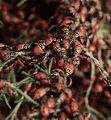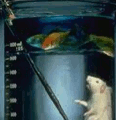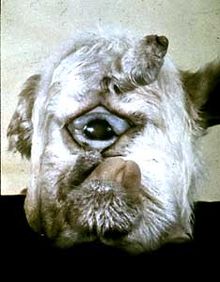Organic compounds can be of every imaginable color, as well as some that are unimaginable. But the really cool part starts when they change color or glow vivdily.
- Weird changing colors
- Weird glowing colors
 |
It's easy for a chemical compound to be colorful - it just needs to absorb some of the visible light that passes through or bounces off of it, which just calls for a few key features in the structure. Through strategic changes to the structure, it can easily change, lose, or gain color. Шt is common and used in many situations. A classic example are those pH indicators, which change color as a result of acid-base reaction. But this could be any other reaction. A weider case of changing colors is an oxymoron called Liquid crystals. In these, the color does not come from the molecules absorbing light. Instead, the molecules line up, kinda like in military formations. And, if the distance between the lines is right, they will selectively disrupt the light of matching wavelength, through the physics voodoo of diffraction and interference. These formations are somewhat flimsy, so a mere change of temperature or electric field will alter them, and their start weirdly changing colors like chameleons. That trick is used in mood rings. Oh, yeah, also in displays of laptops, older style flat screen TVs, and some other devices, hence the name Liquid Crystal Displays (LCD). |

| To make things glow is a bit harder - to do that, the compound needs to emit extra light rather than just absorb some. One cool and somewhat rare way is for a compound to pick up extra energy when it forms in a chemical reaction, and then spit it out as light. That is called by a fancy word "chemiluminescence". The most well known demo of that is oxidation of luminol, or "liquid light". Those glow sticks work this principle, too. So do fireflies, glowing algae, and other glowing sea creatures, though in this case it is called biolumenesce, since living organisms orchestrate the reaction. A more common way of glowing is a trick: a compound absorbs invisible light (usually UV light), absorbs and "digests" it, then spits the energy out as the light we can see - so it appears to glow.
That is called Fluorescence. The demo of that you might see usually involved fluorescein - a dye that is redish-orrange by itself,
but glows funky bright green under UV light, greatly resembling radioactive sluge. Shoelaces that appear to glow, shirts linings that glow under dance "black light" - all those are fluorescent dyes.
As usual, living organisms harnessed that trick as well. The most notorious case is the |



